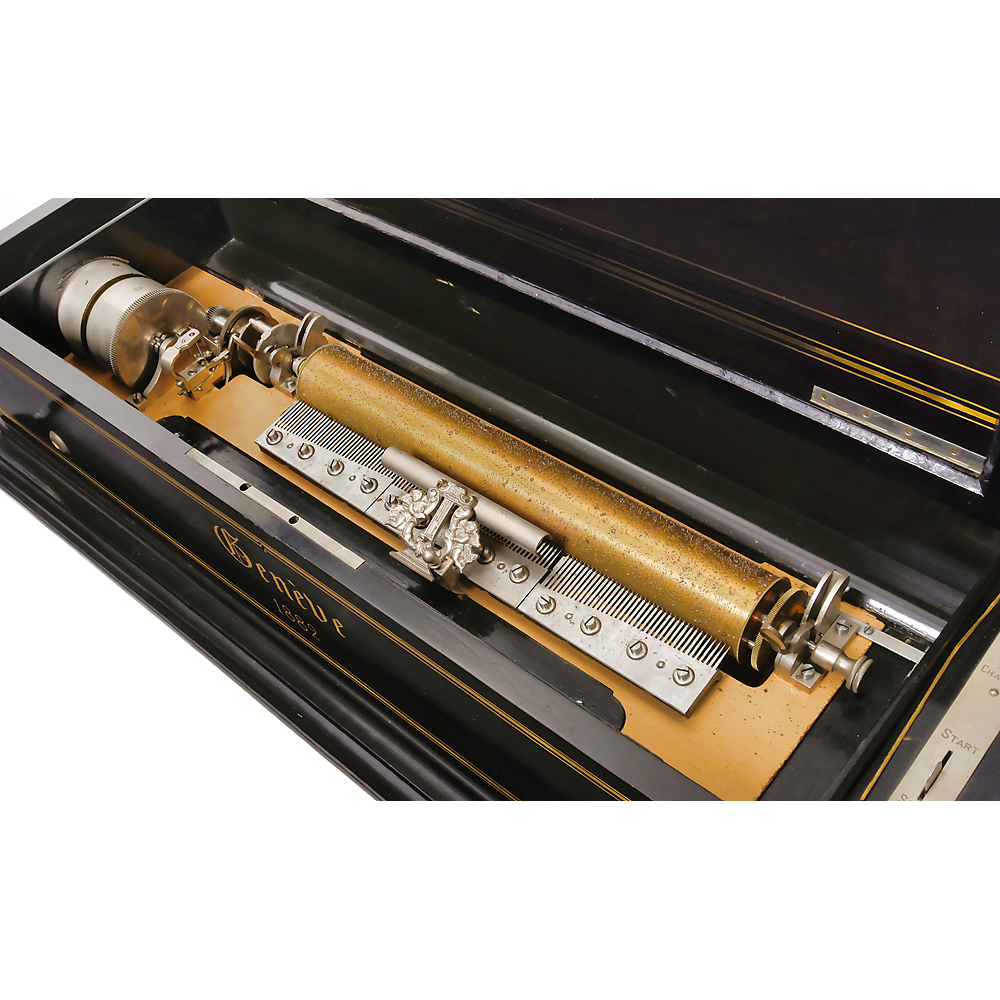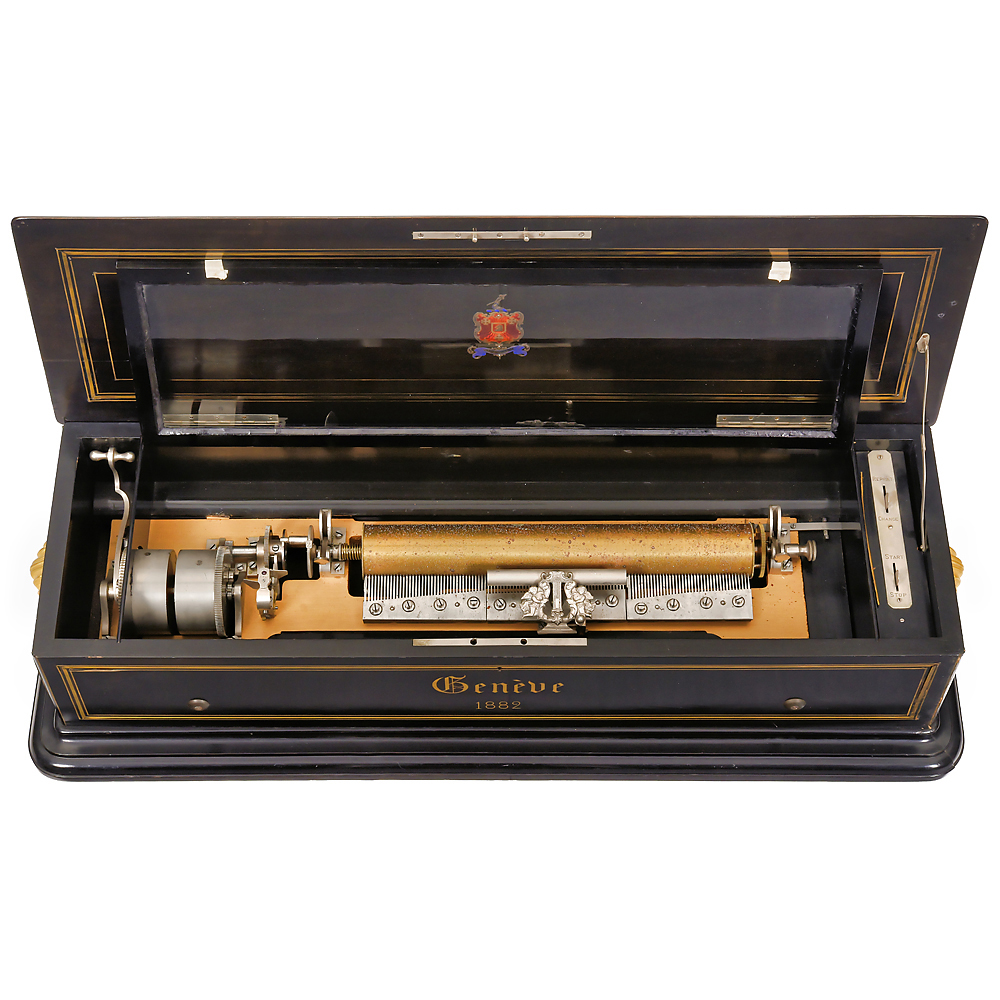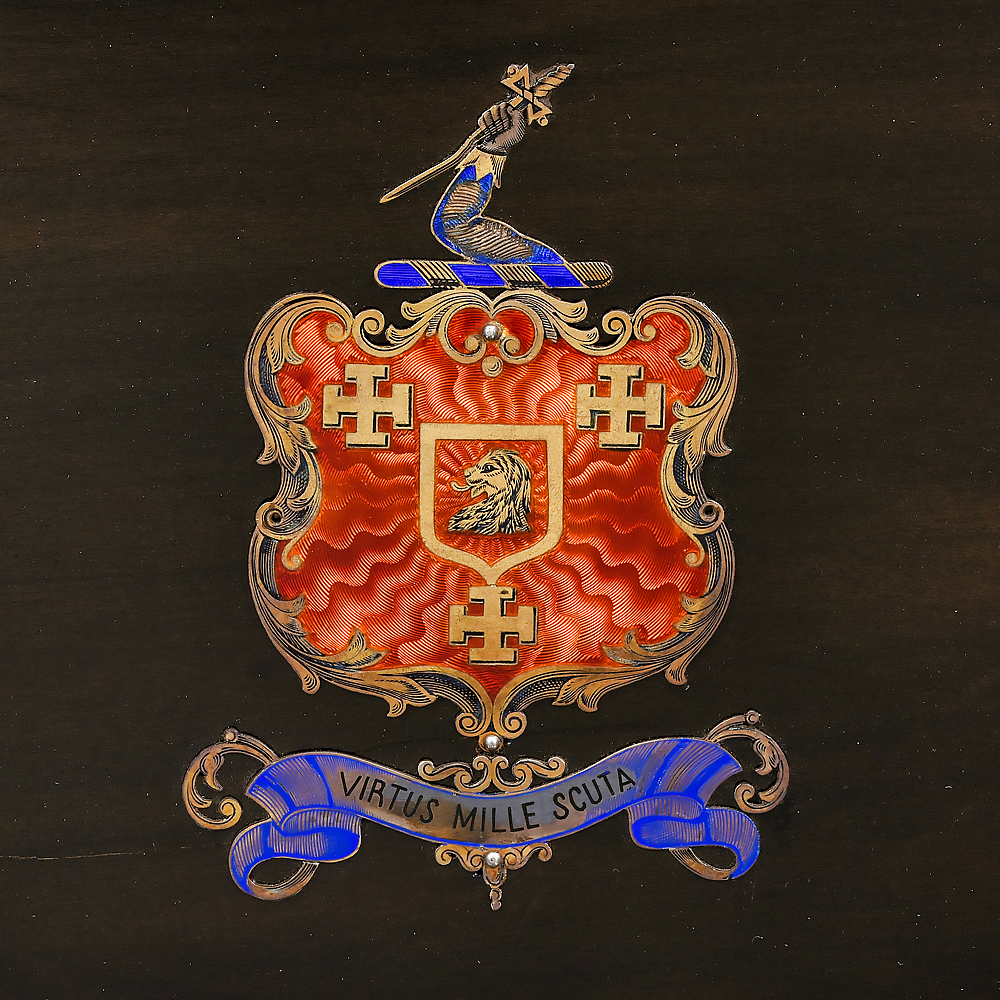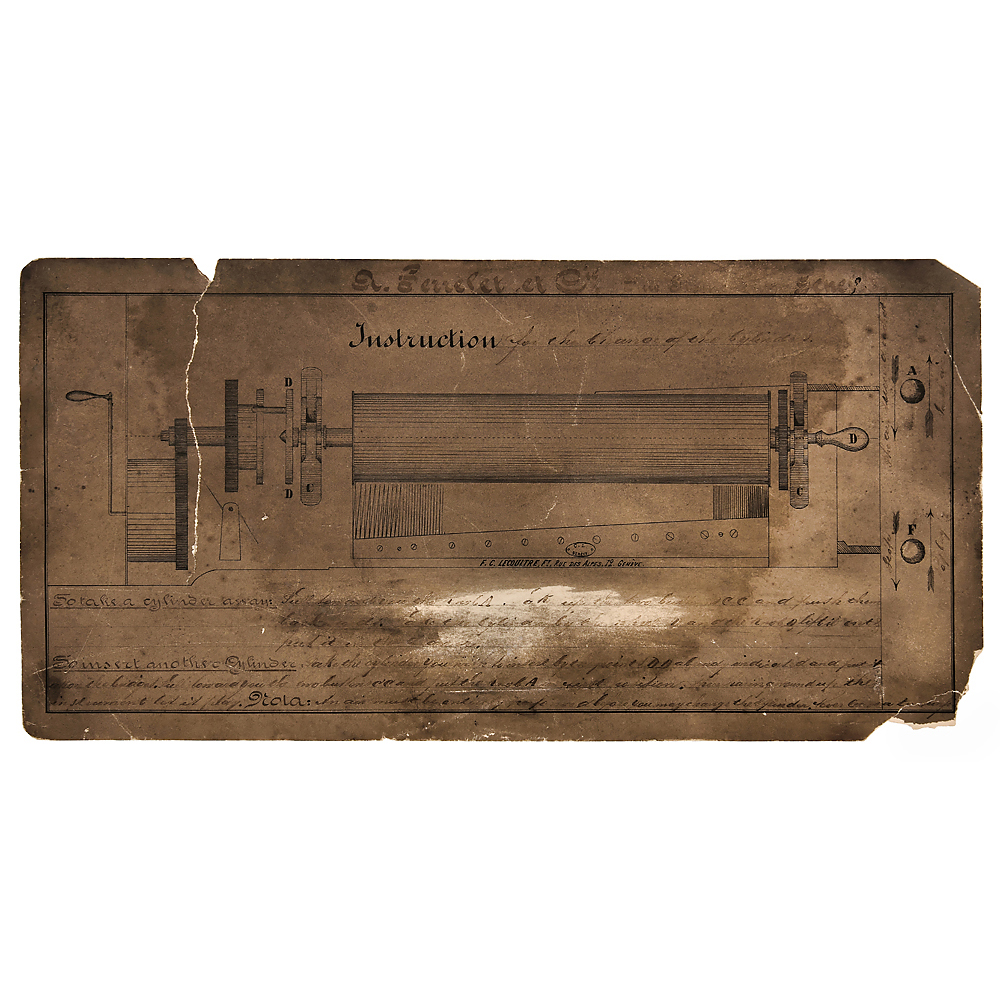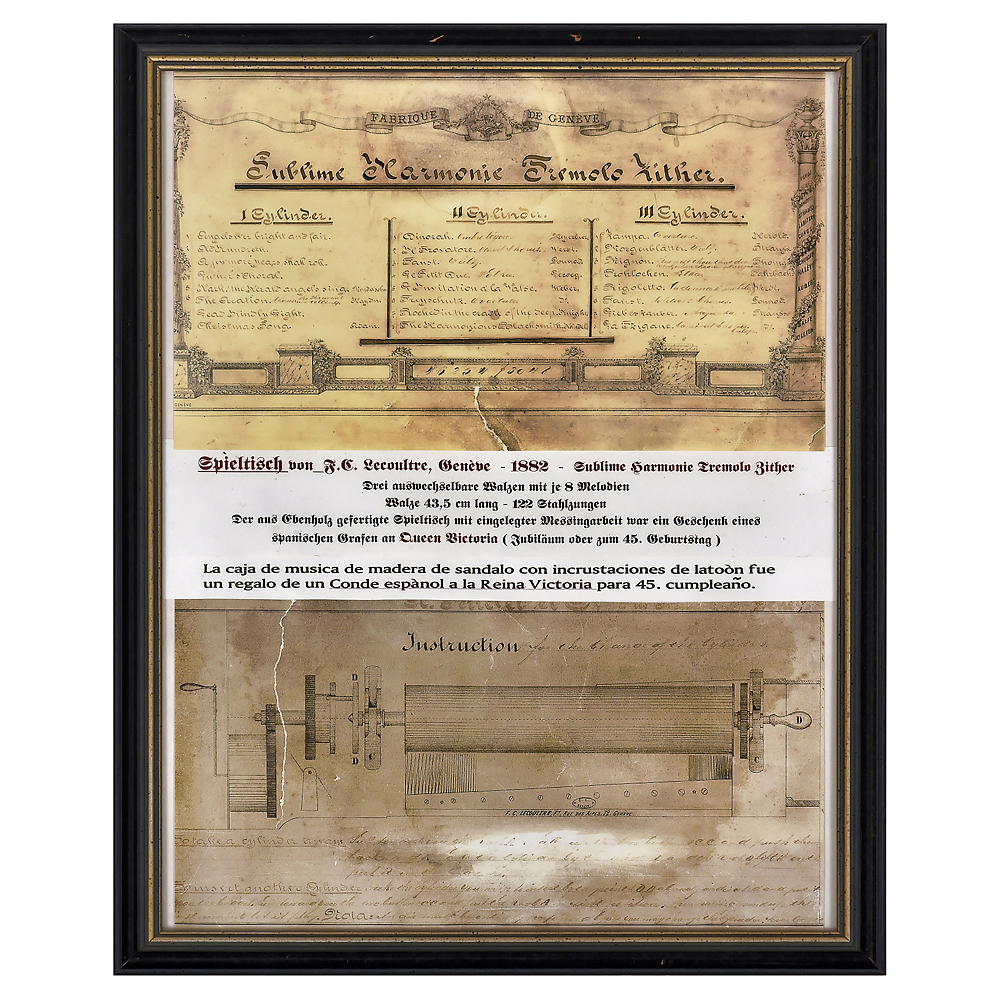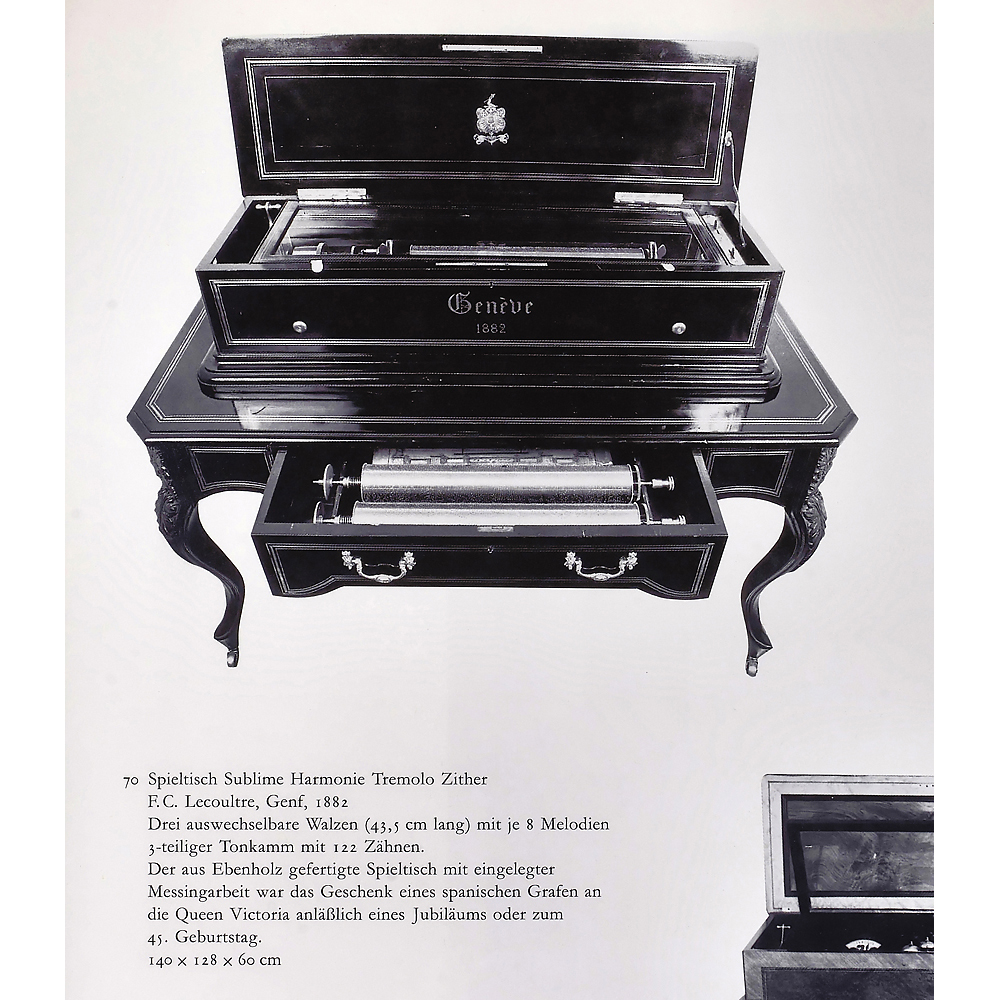Interchangeable “Sublime-Harmonie Tremlolo” Musical Box, a Presentation Model, c. 1882
Starting bid: € 12.000 | Estimate: € 14.000 – 16.000
By F.C. Lecoultre, No. 46254 (on tune-sheet), with three cylinders playing eight airs each, massive nickel-plated double-spring movement, governor-cock stamped “A.P. Co.”, three combs of 39, 44 and 39 teeth (missing one tip, approx. eleven replacement teeth and one replacement tip), ebonized case with brass string-ing and inlaid legend “Genève 1882” on front and lid, shell-form ormolu handles and enameled crest with motto: “Virtus Mille Scuta” (“Virtue is equal to a thou-sand swords”), on matching table with cylinder-storage drawer and cabriole legs with carved fern-and-foliate relief, wd. including table 50 ½ in. (128 cm), cylinders 17 in. (43.5 cm), playing condition. – Note: Accompa-nying the musical box are the tune-sheet and operating instructions, the latter with credit “A. Perrelet et Cie”. The first cylinder is devoted to sacred airs, the second and third to predominantly operatic works by Meyer-beer, Gounod, Verdi, Weber and others, including the overtures from “Freyschütz” and “Zampa”. Auguste Perrelet et Cie, whose initials are found on the gover-nor-cock, took over the business of F.C. Lecoultre in 1871 and continued their existing serial numbers until closure in 1900 (H.A.V. Bulleid, “Tune Sheets”). – Lite-rature: Illustrated in Jan Brauers, “Von der Aeolsharfe zum Digitalspieler”, p. 163. – Brauers states that this musical box was the gift of a Spanish count to Queen Victoria on the occasion of her birthday or jubilee. The year 1882 marked the 45th anniversary of Victoria’s ascension to the throne. Whether Brauers’ assertion is correct, the imposing scale of the musical box, its deluxe case, the crest and the delineation of date and location suggest an instrument produced for presenta-tion or exhibition purposes.
Walzenspieldose”Sublime-Harmonie Tremlolo” mit Wechselzylindern, um 1882
F.C. Lecoultre, Nr. 46254 (auf Melodienblatt), mit drei Zylindern, die jeweils acht Melodien spielen, massives vernickeltes Doppelfederwerk, Geschwindigkeitsregler geprägt “A.P. Co.”, drei Kämme mit 39, 44 und 39 Tönen (eine Spitze fehlt, ca. 11 Zähne und 1 Spitze ersetzt), ebonisiertes Gehäuse mit Messingbändern und eingelegtem Schriftzug “Genève 1882” auf Front und Deckel, muschelförmige Ormolu-Griffe und emailliertes Wappen mit Motto: “Virtus Mille Scuta” (“Tugend ist gleich tausend Schwerter”), auf passendem Tisch mit Walzenschublade und geschwungenen Beinen mit geschnitztem Farn- und Blattwerkrelief, Breite mit Tisch 128 cm, Walzenbreite 43,5 cm, spielender Zustand. – Der Spieldose liegen das Melodienblatt und die Bedienungsanleitung bei, letztere mit dem Vermerk “A. Perrelet et Cie”. Die erste Walze ist geistlichen Liedern gewidmet, die zweite und dritte überwiegend Opernwerken von Meyerbeer, Gounod, Verdi, Weber und anderen, darunter die Ouvertüren aus “Freischütz” und “Zampa”. Auguste Perrelet et Cie, deren Initialen auf dem Regler zu finden sind, übernahmen 1871 das Geschäft von F.C. Lecoultre und führten die bestehenden Seriennummern bis zur Schließung im Jahr 1900 fort (H.A.V. Bulleid, “Tune Sheets”). – Literatur: Abgebildet in Jan Brauers, “Von der Aeolsharfe zum Digitalspieler”, S. 163. – Brauers gibt an, dass diese Spieluhr das Geschenk eines spanischen Grafen an Königin Victoria anläßlich ihres Geburtstags oder eines Jubiläums war. Das Jahr 1882 markiert den 45. Jahrestag der Thronbesteigung Victorias. Unabhängig davon, ob Brauers’ Behauptung zutrifft, deuten die imposanten Ausmaße der Spieldose, ihr luxuriöses Gehäuse, das Wappen und die Angabe von Datum und Standort auf ein Instrument hin, das zu Präsentations- oder Ausstellungszwecken hergestellt wurde.



